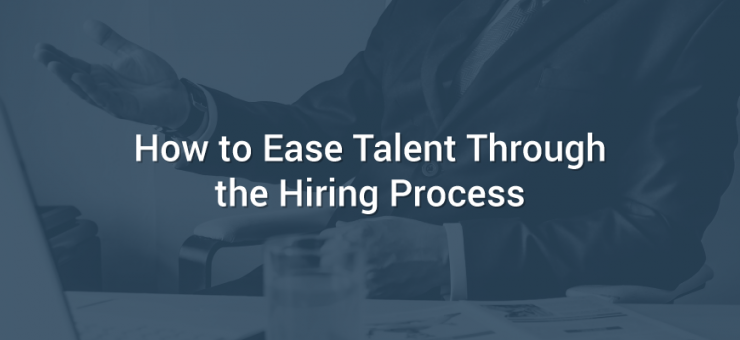The hiring process is dizzying for many people. The varying speeds and sheer number of steps and touch points leave some candidates feeling as though they’re on a rollercoaster. If your focus is not on the candidate experience during the hiring process, you could drive highly-qualified candidates right out of your talent pool.
In fact, more than half (60 percent) of job seekers report having a negative candidate experience in a 2018 report by Phenom People. More importantly, 83 percent of these respondents said they have changed their minds about a company or role after a poor candidate experience.
It’s important to recognize poor or miscommunicated steps can impact your candidate experience. Not only does this have the potential to stunt growth, you also risk maring your brand’s reputation, losing both future talent and customers.
It’s critical you understand where talent is hitting snags in your hiring process in order to ease candidates through. Here’s how you can identify areas to improve and better guide candidates in the hiring process:
Measure where candidates disappear from the hiring process
While you suspect there’s a problem, you can’t just blindly take a stab at improving the candidate experience. Making changes without proper insight wastes time and needlessly expends your hiring budget. You need to assess where candidates disengage from your hiring process.
For example, a SilkRoad and CareerBuilder survey found one-in-five employees say they spend less than 10 minutes on a job application or just two to three pages on a mobile device before dropping off. That’s a pretty narrow window to make sure a candidate enters your pipeline. And if your hiring site isn’t user-friendly, you’re probably deterring a lot of high-quality talent without the patience to apply.
These issues can arise anywhere in your hiring process. It’s important to create a timeline from receiving an application to making an offer and identify the rate of disengagement or dropout in each stage. This allows you to focus on one area of improvement at a time, making it less likely you will overwhelm your hiring team.
First look to answer questions such as:
- What is the rate at which applicants click to apply from the job listing?
- Are applicants dropping out during the job application process?
- Are they accepting an invitation to schedule a video interview?
- Are they making it through the first in-person interview?
- Is your hiring team facing issues of candidates ghosting interviews?
- What is your rate of offer acceptance?
Uncover why they’re dropping out
Once you’ve discovered where in the hiring process candidates most often drop out, it’s time to find out why. For example, candidates who exit your hiring process after the first interview may have found another job in the meantime. This could point to your time-to-hire being too lengthy, which is a fairly common issue.
In fact, according to LinkedIn’s Global Recruiting Trends Report, 70 percent of companies take between one-to-four months to process a new hire. And according to our 2018 Growth Hiring Trends research, only 24 percent of companies report it takes as little as the candidate-preferred 15 to 30 days to make a hire.
Don’t just rely on internal KPIs to determine the source of dropout. Collect direct feedback from candidates along the way. Use candidate surveys following application and interview processes to get immediate insight into where your hiring process may be dissuading talent from moving further down your pipeline.
Create an experience evaluation scale and determine what rating warrants further investigation. Even when applicants move on in the hiring process, if they report poor satisfaction at various stages, it’s worth looking into. By considering all feedback, you gain valuable insight into what candidates like and dislike and how you can better guide candidates through the hiring process.
Show some respect – lay out every step in the process
This should go without saying, but don’t leave candidates guessing on the next step. Nearly 3 in 5 (58 percent) of respondents in a 2018 Glassdoor survey said that they wanted the company to communicate with them clearly and regularly during the application and hiring process. In fact, here at Spark Hire, laying out every step of the hiring process is one of our best practices.
Once candidates apply, let them know how each stage will go should they move forward. Then, offer a timeline and stick to it. When something comes up, send a quick email or give them a call to inform them of the delay. This transparency indicates your commitment to their experience in the hiring process and shows respect for their time.
Feeling respected is a major factor for creating a positive candidate experience. In Monster’s 2019 State of the Candidate Survey, one in seven respondents said they did not feel respected during their last job search.
Show candidates you respect them by keeping them informed during each step in the hiring process:
- Acknowledge receipt of their application
- Let them know if their application has been reviewed
- Tell them why they weren’t moved on to the next stage
- Follow up in a timely fashion after the interview
- Notify them of rejection in a timely fashion
- Tell them if they would be considered for future openings
Also, introduce candidates to your team as soon as they enter the interview process so they know who their points of contact are in case questions arise. Create a formal introduction via video message. This shows you’re serious about their potential and encourages them to continue on.












